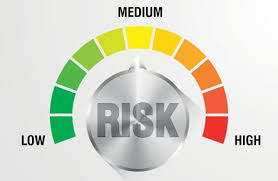We live in a world where we are only allowed to listen to authority to make decisions.
That’s not the world I was raised in, or the world I want to live in.
We also live in a world where others want us to think, do and feel the latest narrative,
And then call you down or out if your not jumping on the cause or band wagon.
Again taking away free will, even calling it selfish to think for one’s self.
We need to get back to the fundamental process of making our own decisions.
Our personal safety is just that, personnel. What may be a safety concern in downtown Toronto, most certainly is not the same concern I have in rural Alberta.
The public health officer of any province who is taking direction from some guy/gal in Ottawa is completely useless.
What is Safety? The condition of being protected from or unlikely to cause danger, risk, or injury: Safety is a state in which hazards and conditions leading to physical, psychological or material harm are controlled in order to preserve the health and well-being of individuals and the community.
It is an essential resource for everyday life, needed by individuals and communities to realise their aspirations.
Controls are the key to prevention:
Controlling exposures to hazards is vital to protecting people.
The hierarchy of controls is a way of determining which actions or combination of actions, will best control exposures. The hierarchy of controls has five levels of actions to reduce or remove hazards. The preferred order of action based on general effectiveness is:
- Elimination
- Substitution
- Engineering controls
- Administrative controls
- Personal protective equipment (PPE)
Using this hierarchy or a combination of controls can lower exposures and reduce risk of illness or injury.
Everyone should be educated on this process, as it is imperative in making your own personal decisions about safety and the health & safety of your family.
Check out our Hazard Management training or Safety culture training, You must know your health and safety rights in order to protect yourself.
Being aware of your right to know about the hazards inherent not only in your workplace, but all aspects of your life, your right to participate in assessing hazards and your right to refuse unsafe or dangerous situations endows you with the tools to quickly become an effective and knowledgeable citizen.
- Clear Expectations: Make safety important, follow basic rules and procedures and ensure you understand what is expected of you.
- Effective Communication: Where possible use face to face communication. Always listen carefully, ask open end questions and verify understanding.
- Personal Leadership: Lead by example and praise safe behavior. Have the courage to do the right thing and never tolerate unsafe behavior whether at work, home or leisure.
- Personal Risk Awareness: Stay aware of your surroundings, remain alert to changes and never put yourself or others at risk. Contribute to discussions about risks on and off the job.
- Planning: Take time to fully familiarize yourself with the safety aspects of everything and question any areas that are not completely clear to you.
- The Right and Duty to Intervene: Challenge any unsafe acts or conditions and praise positive and safe behavior. Welcome and consider intervention from others.
- Accountability: Accept responsibility for your actions and their consequences and offer solutions to prevent incidents. Take responsibility and ownership for safety in the environments that you live and work in, take action and offer solutions to prevent incidents, and take time to think about the positive and negative consequences of your actions and those around you.
- Self-Evaluation: List your personal commitments to safety and share them with your family. Request regular feedback.
- Develop, Encourage and Sustain Safe Behavior: Start every day by thinking of how you can keep yourself and others safe. Practice hazard recognition. Consistently do things the safe way at work and at home. Share good practice and intervene to change bad practice. Give and act on positive and negative feedback. Continually look for opportunities to learn from others. Keep communicating the benefits of sustained safety.
- If it does not feel right, don’t do it! Use your gut!


 CAD
CAD USD
USD
What does the ORCID author identification system do in Scopus?
Regard IT Telkom
How can we balance the influence of external narratives with the need to make personal decisions about safety based on individual circumstances and local context? discuss with us